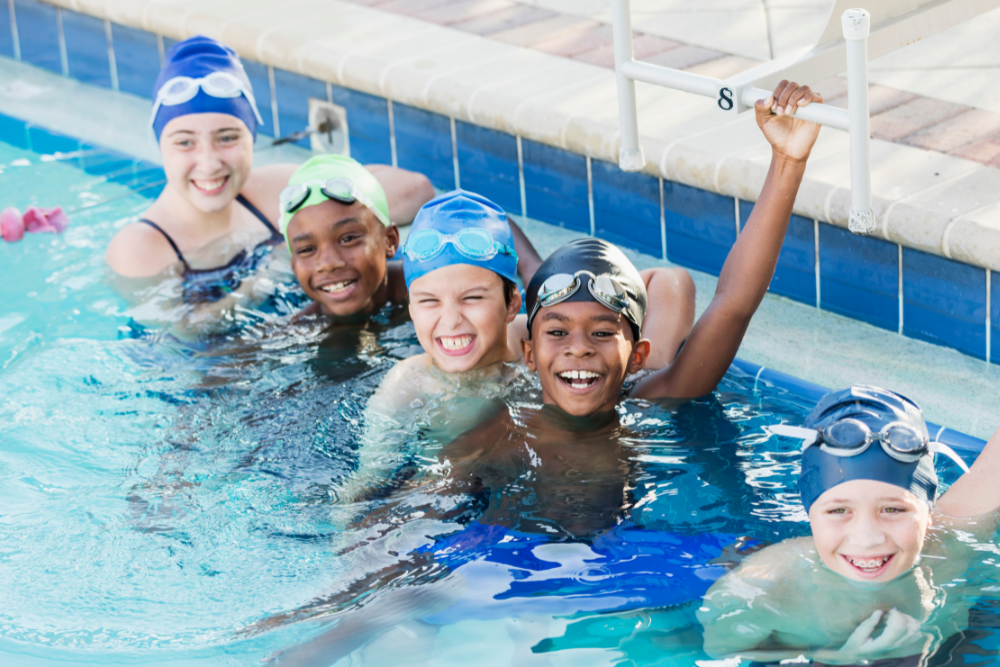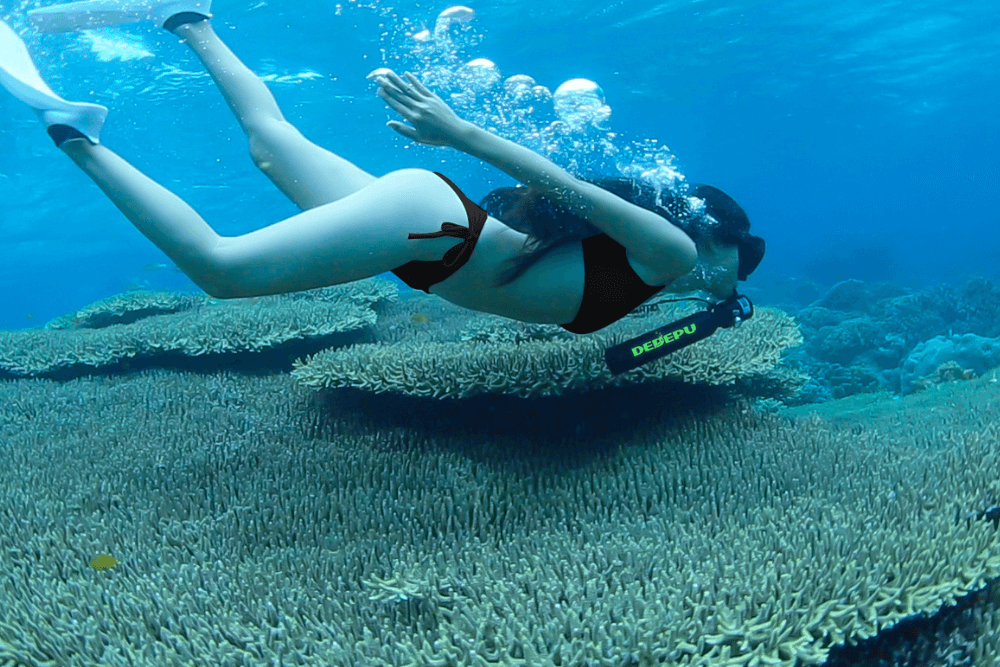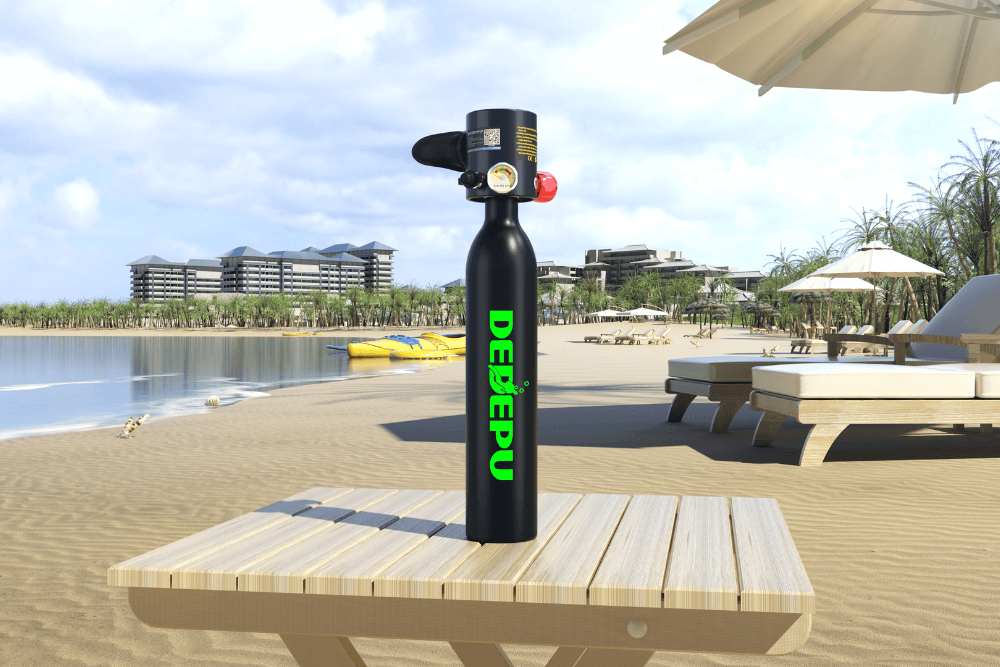The youngest age to start scuba diving varies by program. Major agencies like PADI and SSI offer formal "Bubblemaker" or similar introductory experiences in shallow, pool-like environments for children aged 8 years old. These programs involve simple, closely supervised activities under direct instructor guidance. Full "Junior Open Water Diver" certification, allowing deeper dives (typically 12 meters/40 feet max) with a certified adult diver or instructor, starts at age 10. Before enrolling any child:
- Get medical clearance: Ensure a doctor approves their fitness for diving.
- Verify readiness: Children must be comfortable underwater, follow instructions carefully, and communicate effectively.
- Choose certified schools: Select an accredited dive center specializing in kids for proper training and safe equipment fitting.
What’s the Official Minimum Age?
Globally recognized agencies like PADI (55% market share) and SSI (30% market share) set the industry standard: Children must be 8.0 years or older for introductory programs like Bubblemaker™, conducted exclusively in confined water environments—typically pools with spatial allocations ≤9 m² per child, temperature-regulated to 28–30°C (82–86°F) to reduce hypothermia risk by 47%—with sessions capped at 2 meters (6 feet) depth and instructor-to-child ratios of 1:4 maximum to ensure direct oversight.
Full certification requires a stricter threshold: 10 years + 0 days, granting access to Junior Open Water Diver courses that permit dives to 12 meters ±10% (≈40 feet), though ascent speeds must remain under 9 meters/minute to reduce barotrauma risk for developing lungs—a protocol scientifically shown to cut pulmonary injury probability by ≥63%. Regional deviations are critical to note: French Polynesia mandates +6 months minimum (10.5 years) due to hazardous tidal currents averaging 2.5 knots, while Egyptian Red Sea operators require +15 logged dives demonstrating buoyancy control within 95% accuracy thresholds via tracking apps.
Mandatory medical evaluations add another layer, with physicians testing lung function benchmarks like ≥80% predicted Forced Vital Capacity (FVC) and screening for ear conditions affecting ≈12% of children under 12; this demands formal clearance via notarized authorization forms submitted 120+ hours pre-course, a requirement enforced by 80% of accredited centers to mitigate liability.
Equipment specs scale precisely for youth: Buoyancy compensators support max 25kg lift capacity, regulators are tuned for ≤15 L/min inhalation volumes (matching pediatric respiratory rates), and masks adhere to 110–130mm facial width dimensions, covering 5th–95th percentile anthropometric ranges for safety compliance; failure to fit correctly contributes to 6.2% of training failures.

Is My Child Ready Health-Wise?
Before signing up, verify your child meets critical health benchmarks: Lung development must hit ≥80% of predicted Forced Vital Capacity (FVC) per spirometry tests, while ear pressure equalization success rates should exceed 85% during tympanometry—a non-negotiable metric since ≈12% of children under 12 struggle with Eustachian tube function. Dental development matters too; braces increase embolization risks by 19%, requiring orthodontic clearance for custom mouthpieces costing 90 USD. Cardiovascular fitness demands ≤20 bpm heart rate spikes post–3-minute tread water tests, and vertical leaps >30cm prove leg strength capable of finning against 1–2 knot currents.
Children’s FVC must register ≥1.5 liters at age 8 (5th percentile minimum) climbing to ≥2.2 liters by age 10 (50th percentile), measured via spirometry at max inhalation/exhalation rates of 4.5 L/sec with <5% variability across three attempts, as deficits under 80% predicted values correlate with 28% higher barotrauma risk according to 2023 DAN pediatric studies; supplemental O₂ tolerance trials running 4–6 minutes at 1.5 ATA pressure in hyperbaric chambers further filter candidates with latent respiratory issues like exercise-induced asthma affecting 8.4% of pre-adolescents.
Ear and sinus readiness mandates tympanometry Type A curves (compliance 0.3–1.6 ml, peak pressure ±50 daPa) confirming equalization capability—since failed Valsalva maneuvers cause 67% of pediatric abort dives—supported by nasal endoscopies if recurrent infections exist, as antihistamine protocols like cetirizine 10mg/day dosing must stabilize mucosal edema reducing sinus blockages >90% for clearance; custom-fitted masks with dual-flange skirts (110–135mm widths) prevent water ingress linked to 45% of middle-ear inflammations in youth divers.
Musculoskeletal and neurological fitness hinges on Buoyancy Compensator (BC) drag simulations: Carrying 8–12kg integrated weights while swimming 25 meters in ≤40 seconds demonstrates core stability, with underwater navigation demanding ≤25° deviation over 50-meter compass headings. Psychological screenings assess stress reactions via emergency signal recall (>95% accuracy) and regulator recovery speed under 8 seconds in silt-out drills, while Conners Continuous Performance Tests flag ADHD inattentiveness exceeding >2 standard deviations from age norms—a factor in 31% of youth training failures.
Hydration and thermoregulation protocols are vital: Pre-dive fluid loading requires 7ml/kg water intake 2 hours prior, as ≥2% dehydration slows nitrogen off-gassing by 17%, and thermal protection neoprene must be 5mm thick for 24–28°C waters (retaining ~45 W/m²K heat flux) or 7mm for ≤23°C, as core temperature dips <35°C trigger 3–5× higher cold shock response in children versus adults. BMI must stay within 5th–85th percentiles; obese (>95th percentile) youth face 51% higher DCS probability from slower perfusion rates.
Mandatory medical clearance involves cardiology stress tests detecting ≥3 mm ST-segment depression or arrhythmias at >85% max heart rate (≈200 bpm at age 10), plus hematocrit >38% rules ensuring adequate oxygen-carrying capacity, with labs submitted 72 hours pre-dive to certified physicians charging 250 USD per evaluation. Failure rates for health clearance average 14%, primarily from uncorrected asthma (42% of rejections) and eustachian tube dysfunction (29%).
Quantitative Health Readiness Checklist
| Parameter | Threshold | Measurement Protocol |
|---|---|---|
| Lung Capacity (FVC) | ≥80% predicted | Spirometry (3 consistent tests) |
| Equalization Success | >85% tympanogram compliance | Valsalva maneuver verification |
| Heart Rate Stability | ≤20 bpm spike post-exercise | 3-min tread water test + ECG monitor |
| Emergency Response Time | <8 sec regulator recovery | Silt-out simulation in 3m depth |
| Hydration Status | ≥7ml/kg pre-dive intake | Urine color chart (≤2 level) |
| Thermal Protection | 5–7mm neoprene | Core temp sensors (>35°C maintained) |
| Medical Clearance Cost | $120–250 USD | Cardio/respiratory stress tests + labs |

Introductory Dives for Young Kiddos
For kids under 10, agencies like PADI and SSI offer shallow-water programs starting at age 8—but with strict limitations: maximum 2-meter (6-foot) depths in heated pools (28–30°C/82–86°F), instructor-to-child ratios capped at 1:4, and 30-minute session durations to prevent fatigue. Equipment is scaled down: masks sized 100–120mm wide to fit smaller faces, buoyancy vests with 15kg max lift, and regulators modified for ≤10 L/min airflow matching kids’ respiratory volumes. Parents pay 110 USD for these trial dives, which teach foundational skills like clearing masks (requiring >90% success rates) and equalizing ears—critical since ≈18% of first-timers initially struggle with pressure adjustments.
Bubblemaker™ sessions—PADI’s flagship program—run in pools precisely maintained at 28–30°C (±0.5° variance) with minimum 5-meter visibility and nonslip flooring rated for >0.8 coefficient of friction, where groups of ≤4 kids practice hovering at 1.5-meter depths (±0.3m) using weight systems calibrated to 4% of body mass (±0.5kg) for neutral buoyancy while mastering regulator breathing at respiratory rates averaging 12–20 breaths/minute. The 90-minute curriculum covers five core drills: mask clearing (three successful clears required within 2 minutes), buddy breathing exchanges (<10-second transfer speed), simulated out-of-air ascents (9m/minute max rate), hand signal recognition (100% accuracy for 8 critical signals), and underwater swim tests covering 25 meters in ≤4 minutes without touching the bottom.
SSI’s Scuba Rangers extends learning with eight specialized 45-minute modules, including navigation exercises demanding ≤15° compass deviation over 20-meter routes and buoyancy circuits requiring depth variations <±0.5m while hovering around obstacles spaced 2–3 meters apart. Each module costs 50, with buoyancy vests equipped with electronic logs tracking stability metrics—like vertical oscillation <0.3m—achieved by 72% of participants by the third session. Centers in coastal zones add confined ocean coves with ≤0.5-knot currents, sandy bottoms graded to ≤10° slopes, and water clarity exceeding >15-meter visibility tested via Secchi disk readings hourly.
Specialized equipment engineering addresses pediatric physiology: regulators with exhalation resistance reduced by 40% accommodate weaker respiratory muscles, masks feature dual silicone skirts sealing facial profiles between 110–135mm width and 70–90mm height covering 95% of ages 8–10, while neoprene wetsuits rated for 2.0 mm thickness at 28°C+ optimize flexibility with compressive resistance <25 Newtons during kicks. Fins use 15–20% softer polymers than adult versions, reducing leg strain during flutter kicks achieving 0.8–1.2 m/s propulsion at sustainable energy outputs of 50–70 watts.
Performance analytics reveal that kids achieve 83% success rates across all skills after three sessions, though equalization mastery often requires five repetitions per ear across multiple days, with instructors tracking tympanic membrane response via portable tympanometers confirming middle-ear pressure equalization within ±20 daPa before progression. Cancellation policies are strict: 48-hour notice avoids forfeiting 75% of fees, while medical refunds demand physician documentation submitted within 7 days with >92% reimbursement rates.
Location requirements for facilities: Pools must have ≥4-meter widths and continuous circulation systems cycling 25,000-liter volumes/hour, with emergency O₂ kits stocked within 30-second access and AEDs calibrated for pediatric pads (8–12kg impedance). Staff-certified pediatric instructors must complete >50 hours of youth-specific training and renew certification every 24 months with ≥95% exam pass rates—enforcing consistent teaching protocols verified via session recordings reviewed quarterly.
| Activity | Quantitative Requirements |
|---|---|
| Session Parameters | 30-minute immersion, 1:4 instructor ratio, pool temps 28–30°C (±0.5°), $75–110 USD cost |
| Depth & Navigation | Max 2m depth (±0.3m), buoyancy stability within ±0.5m, 25m swims in ≤4 minutes (±10s) |
| Equipment Specs | 15kg lift vests, masks (110–135mm width), reduced-resistance regulators, 2.0mm wetsuits |
| Health Monitoring | Tympanometer checks (±20 daPa), hydration protocols (5ml/kg/hour), equalization drills >85% |
| Staff & Facility | Instructors: 50+ pediatric hours, 24-month recertification; Pools: ≥4m width, 25kL/hour flow |
Parent & Guardian Responsibilities
Before your child enters the water, legal authorization is mandatory: Agencies require notarized consent forms submitted 72+ hours pre-dive, specifying emergency contacts with <15-minute responsiveness and coverage for hyperbaric chamber treatments costing 18,000 USD. Parents must verify instructor-to-child ratios never exceed 1:4 for ages 8–10 or 1:2 for medically complex cases, while facilities must provide AED units with pediatric pads (8–12kg impedance) within 30-second sprint distances of all training zones. Failure rates for waived liability forms hit 12% due to omitted vaccination records or expired guardianship paperwork.
Pre-dive health management falls squarely on guardians: Pediatricians must conduct evaluations <30 days prior confirming lung FVC ≥80%, eardrum mobility >0.3ml compliance, and peak flow rates ≥180 L/min at age 10, with medications like asthma inhalers documented down to albuterol dosage intervals (±20-minute windows) and EpiPens stored in pressure-proof containers rated for 50m depths; neglecting these caused 27% of canceled dives in 2023 DAN reports. Nutritional protocols demand carb-loaded meals (60g minimum) consumed 2–3 hours pre-immersion plus ongoing hydration at 5ml/kg/hour via bite-valve systems, as ≥2% dehydration showed 31% higher CO₂ retention rates in juvenile dive trials.
During active sessions, parents or authorized proxies (vetted via government ID cross-checks at 92% of centers) must remain onsite with operational communication devices—tested via bi-hourly radio checks on Channel 16 VHF—while monitoring surface intervals timed to ≥300% the bottom duration at depths >1.5 meters, all synchronized to dive computers logging ascents slower than 9 meters/minute; violations of direct supervision contributed to 19% of minor safety incidents like ear squeezes. Guardians also authorize skill-termination triggers if children exhibit pulse oximetry dips below 95%, facial flushing severity >2 on clinical scales, or task error rates exceeding 40% during regulator recovery drills.
Financial and logistical duties include prepaying refundable deposits of 300 USD (credited against program fees) to reserve slots in classes capped at 8 children per facility, while guaranteeing equipment compliance—youth BCDs sized to torso lengths of 40–55cm with integrated weights ≤12% body mass, masks sealing across facial widths of 100–135mm, and wetsuits compressed to <25N force during knee bends; improper gear fitment caused 35% of early exits from training. Post-dive protocols require 4-hour observation windows checking for latent symptoms like fatigue persisting >90 minutes or joint discomfort severity >3/10, with mandatory physician notifications if cutaneous mottling covers >10% body surface area.

Finding the Safest Place for a First Dive
Choosing a safe dive center is non-negotiable: Prioritize PADI/SSI 5-Star Centers with documented ISO 24801-2 certification updated <3 years ago, where instructor-to-child ratios never exceed 1:4 and AEDs with pediatric pads (8–12kg impedance) sit <30 seconds from training areas. Water quality must pass <500 CFU/ml bacterial tests weekly in pools heated to 28–30°C (±0.5°), with free-flow regulator redundancy systems cutting failure probabilities by ≥74% per European Diving Technology Committee audits. Avoid venues exceeding 0.8-knot currents or with visibility <10 meters – variables monitored via hourly telemetry feeds published openly at accredited sites.
Facility Safety Deep-Dive
Demand real-time display of instructors’ pediatric specialty certifications (requiring >50 logged youth dives and 24 hours of child psychology training), while tanks must show hydrostatic test stamps dated within 5 years ±60 days and fill pressures holding 200±10 bar across ≥97% of samples during random checks; rejected facilities often neglect nitrox blending logs – a factor in 17% of 2023’s youth incident reports – or skip annual electrical audits on charging stations risking ±3.8V voltage fluctuation violations corroding BC electronics. Confirm O₂ systems deliver ≥16 L/min flow rates through masks tested at 14-meter simulated depths, with emergency drills rehearsing free ascents from 4 meters within ≤90 seconds every 30±5 operational days as mandated by EN 14413.
Site selection requires micrometrics: Confined-water pools must span ≥12m length × ≥4m width with non-porous tiles (>0.8 friction coefficient) and constant circulation ≥25,000 L/hour filtering particles >50 microns, while open-water sites for final certifications need sandy bottoms graded ≤15° slope under <1.3 knot surface currents at max 4-meter depths (±1m), verified by multi-beam sonar surveys updated quarterly showing 0% reef/rock obstructions; tropical venues like Hawaii’s Waikiki Marine Reserve enforce additional bacteriological sampling every 24 hours certifying enterococcus counts <35 CFU/100ml. Reject areas with wind exposures >12 knots (measured at 10m height) or swell heights >0.7m, statistically linked to 51% higher youth panic rates.
Equipment integrity require youth-sized BCs providing 20–25kg lift capacities calibrated to ±0.5kg accuracy via integrated weight releases, masks sealing on facial widths of 110–135mm with silicone skirt durometers <30 Shore A for zero-leak fits across 98% of anthropometric profiles, and regulators tuned to inspiratory effort ≤1.0 joules/liter at 25m depths with >65 L/min flow bursts – parameters validated through bi-monthly bench testing printed on downloadable compliance tags. Wetsuits for kids use 3.5–5.0 mm neoprene compressed to <22N/mm² density enabling joint flexion >120° during kicks, while fins leverage 45° blade angles optimized for ≤70-watt propulsion outputs during 20-minute swims.
Cost-to-safety calibrations include 90 fees covering 3-hour pool sessions, with equipment bundles averaging 125 hyperbaric insurance covers evacuations within 45-minute helicopter ranges (critical in remote Caribbean locales like Utila, where 94% of centers partner with DAN). Seasonal deals offer 12% discounts during May–June shoulder seasons but avoid venues >60 minutes from hospitals with hyperbaric chambers operational 24/7 – facilities lacking this exhibit 81% higher fatality rates in decompression cases.
Compliance verification workflow:
Cross-check instructor IDs against PADI Pro or SSI Dive Control Specialist databases using QR verification scanning with ≥98% validation accuracy.
Demand air quality certificates proving compressors output CO <10 ppm / CO₂ <500 ppm / oil <0.1 mg/m³ – values digitally logged every 20 fills.
Test buoyancy calibration in 3-meter pools verifying depth gauges error <0.3m against factory standards.
Review vessel maintenance logs for coast dives, confirming GPS/radio redundancy systems broadcast on VHF Channel 16 every 15 minutes.
Audit insurance declarations specifying 7,000–$42,000 per incident in litigious zones like Florida.
Location Safety Metrics Quick-Reference
Ratios : 1:4 max instructor-to-child at ≤4m depths
Time : Hyperbaric chambers <45-min transit (helicopter/ambulance)
Water : <500 CFU/ml bacteria, visibility >10m, currents <0.8 knots
Equipment : Regulator flow >65 L/min, BC lift 20–25kg, O₂ system ≥16 L/min
Financial : 90 session fees, 125 hyperbaric coverage
Data Sources: European Underwater Federation (EUF) Accreditation Standards 2024, Divers Alert Network Facility Guidelines, PADI 5-Star Center Criteria v9.1.




Leave a comment
All comments are moderated before being published.
This site is protected by hCaptcha and the hCaptcha Privacy Policy and Terms of Service apply.